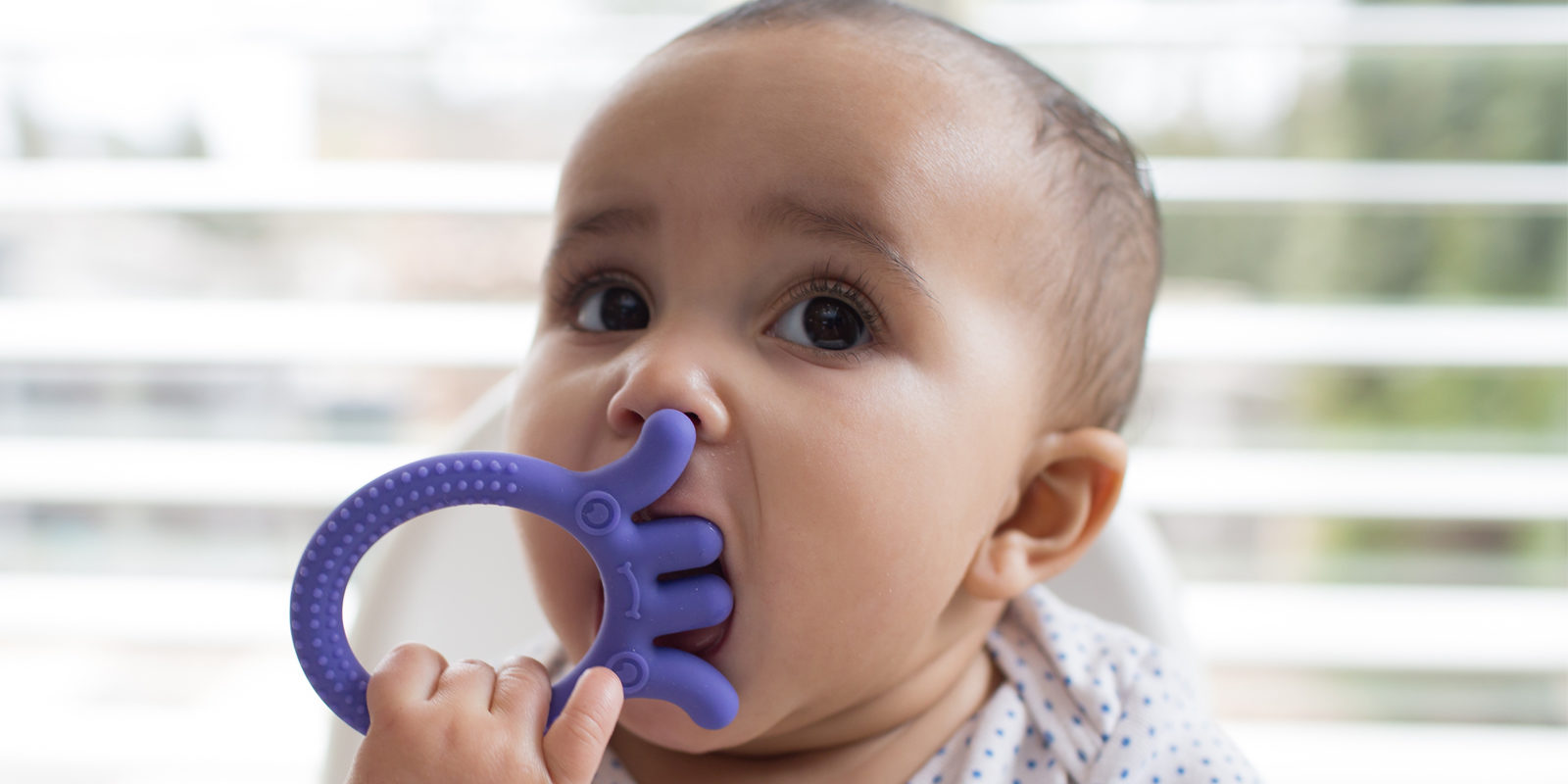Teething is one of the longer phases of development in the first few years of life. Most babies begin teething at 6 months and molars continue to develop until 3 or 4 years old. During this time, parents are also trying to help develop healthy sleep habits. When teething becomes painful, how do parents help their baby feel comfortable without impacting sleep?
Here are three tips to help parents survive the teething phase.
- Identify your baby’s symptoms and patterns
It is important to note that if your child is teething, they will very likely have those symptoms during the day. If the baby wakes up unexpectedly in the middle of the night, and you didn’t notice any symptoms during the day, it’s not likely to be teething. It can be helpful to keep an eye on their activity during the day. Do you see a pattern of irritability, rash around the mouth from excessive drooling, biting, or diarrhea when they’re awake? If so, this could very well equal teething. Try to manage pain during the day and see if that helps lessen symptoms. If not, consider what else could be interrupting her sleep.
- Manage your child’s symptoms
Once you have identified that your child is teething, it’s important to know how to soothe the symptoms. The best first line of defense is typically a teether. Teethers soothe baby’s tender gums and can help distract from the pain. Dr. Brown’s has a wide range of pacifiers and teethers that can be put in the fridge or freezer for additional relief. A cold, wet or frozen washcloth can also provide temporary relief by providing counter pressure to mouth pain.
If these distractions don’t work and your child is at least 2 years old, check with your pediatrician about offering an over-the-counter pain reliever.
- Maintain good sleeping habits
The most important tip for parents is to not let teething inhibit the development of healthy sleeping habits. Because teething happens for a long time, it’s easy to use it as an excuse for poor sleeping, or to postpone sleep training. Teething can often serve as a scapegoat for common behavioral sleep issues. If parents reinforce baby’s poor sleeping when teething, they may start to cause a new habit, which can set sleep training progress backward and typically doesn’t help the actual issue. Keeping a consistent sleep routine schedule with regularly enforced naps and bedtime, is the best way to create a consistent sleep schedule, regardless of teething pain.
There are several key ways to practice healthy sleep habits:
- Create an ideal sleep environment:
- Ensure the room is dark enough (use blackout curtains if needed)
- Make sure the room is set to an ideal temperature of 68-72 degrees during sleep
- Use a constant white noise and add a humidifier to help with air dryness.
- If your toddler is constantly asking for water during the night, consider leaving a sippy cup of water next to their bed so they can take a drink when they wake up early and (hopefully) get back to sleep on their own—without involving parents or getting out of bed.
If you’re a parent dealing with teething issues, remember to try and deal with the pain during daylight hours and stick to existing sleep schedules. As you learn your child’s habits, you’ll be able to more easily deal with teething pain and help ensure a less painful experience for both of you.
